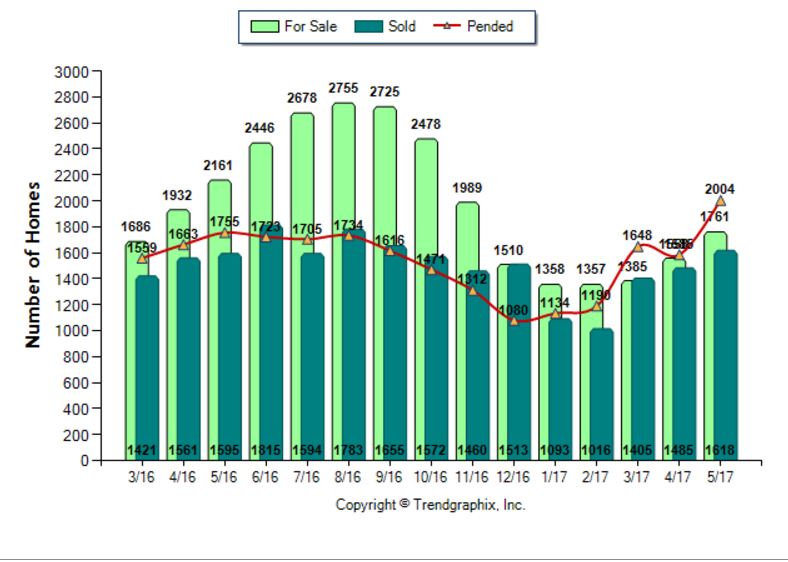The 4 MOST IMPORTANT Measurements That Define a “SHIFT”

THE SIGNS OF MARKET SHIFTS

THE 4 EARLY SIGNS OF MARKET CHANGES
Is there any way of knowing before it happens?
How do you know if and when the market has topped? When the Sacramento area real estate market changes, does it happen all at once? Everywhere at once? How long does it take before you can really tell for sure? Is your area’s real estate market beginning to shift?
Depending on your neighborhood, your price range and your personal situation- it may be time to take a snapshot of the market and the trends…
The most difficult thing about a Real Estate Market shift is we NEVER know for sure whether we are in a slight market adjustment or a major market retraction or just a coincidental series of market events, until there is an undeniable amount of evidence. And by then, the shift is over… the evidence comes after the fact, AFTER you can do anything abut it.
It’s the perfect definition of a lagging measure; when we know for sure that there are changes in a market, changes proven valid by market data, we are, well,
….we’re way too late.
What are the signs BEFORE A DROP IN PRICES?
Real Estate Data happens AFTER the transactional instances that create that data. Absorption Rate, Days on the Market, Months of inventory. These are usually more easily seen and measurably noticed earlier than changes in average prices or median prices.
But remember too, that they are all measurements of events. These events/actions happen one at a time… One home, one family, one triumph or one calamity at a time.
How would you know if we are beginning a real estate market change? A“shift”? The answer is in the numbers, the reports that MLS data and public records provide.
What are THE 4 SIGNS OF MARKET CHANGES?
HERE’S WHERE THE CHANGES WILL START:
1- an ongoing increase in listings- more homes on the market –
Basically, there are just more homes for sale- watch for a higher trending number of ACTIVE LISTINGS and Months Of Inventory. This just means more supply, less demand. (As basic as it gets.) -see definitions below for more info.
2- More and more listings “expiring” –
…or in other words, going all the way through the listing period UNSOLD. (typically either 120, 180 or 365 Days). See above.
3- Trending longer Average Days on the Market – and more Months Supply of Inventory
…as inventory increases, and there are more choices, buyers simply take longer to see all their options and make a decision… and no longer feel the same URGENCY to act quickly, pay higher than list price and compete time and again to buy a home. This will always coincide with a higher percentage of homes that go through a price reduction in list price before actually selling. Also ALWAYS an increase of homes “back on the market” which means more failed escrows. -see definitions below for more info.
4- Increase in price reductions –
This is not always obvious, as the original price is not typically shown to the consumer. The asking price at the time the accepted offer is the number seen by the public. The original price can be harder to find.
So again, remember, all of these measurements are “lagging indicators” meaning the proof is always after the fact. Measurable data usually doesn’t show up at least 30 days late. And it will always be found in the reports and metrics that are measured by; Absorption Rates, Days on Market, Months of Inventory Sold Price/Orig List Price… (and what does that all mean?!?)
Here’s a quick guide to the measurements that define a “SHIFT”:
ABSORPTION RATE A measurement frequently used to gauge the liquidity of a given market is the absorption rate. This is basically the rate in which a specific segment of a real estate market sells in a given time frame. As a generic term, Absorption Rate is sometimes used interchangeably with sales rate or turnover rate. Months of inventory. Days on the market are both aspects of a market’s AbsorptionRate
DAYS ON MARKET (DOM) Are the number of days between a listing going on market and accepting an offer. The lower the average days on market figure, typically the stronger the buyer demand and the hotter the market. Note that this statistic is easily distorted by several factors: it is not even affected by the percentage or mass number of HOMES THAT DO NOT SELL. Also, distressed home sales, which often have a very high DOM as there are many times that institutional sellers sit on offers for days and even weeks before responding; by that minority percentage of listings that sell after multiple price reductions (one property that sells after being on the market for 12 months can sometimes play havoc with an overall average for a neighborhood); and by deals that fall through after offer acceptance (the listings come back on market and perhaps sell quickly, but the DOM clock keeping ticking throughout). No matter what the market is doing, well prepared, appealing, well-priced listings often accept offers within days of coming on market. No matter what the market is doing. Note:
MONTHS SUPPLY OF INVENTORY (MSI) Also known as MONTHS OF UNSOLD INVENTORY Reflects the number of months it would take to sell the existing inventory of homes for sale at current market sales rate or “TURNOVER” rate. Using the previous months number of sales, how many months would it take to sell all the homes available. The lower the MSI, the stronger the demand as compared to the supply and the hotter the market. Typically, below 3-4 months of inventory is considered a “Seller’s market”, 4-6 months a relatively balanced market, and above 6 months, a “Buyer’s market.” DOM is only affected by the homes that actually CLOSE! So, the homes that sit for months and then go off the market unsold do not even show up in this metric. This is why DOM and MSI do not trend exactly. There is often a confusing disparity between DAYS ON MARKET VS. MONTHS SUPPLY OF INVENTORY
SOLD PRICE/ORIG. LIST PRICE DIFF. % When a property is listed on the market, the list price may change couple times before it gets sold. The original list price is the price that is first entered to the MLS database when a property is listed on the market. The Sold/List Diff. % represents the percentage difference between actual sold price and the original list price the day it initially was marketed.
There are often huge differences between neighborhoods, price ranges, school districts… Huge disparities that you would never imagine. AND these trends always start somewhere-
What’s happening in your area? Do you know?



